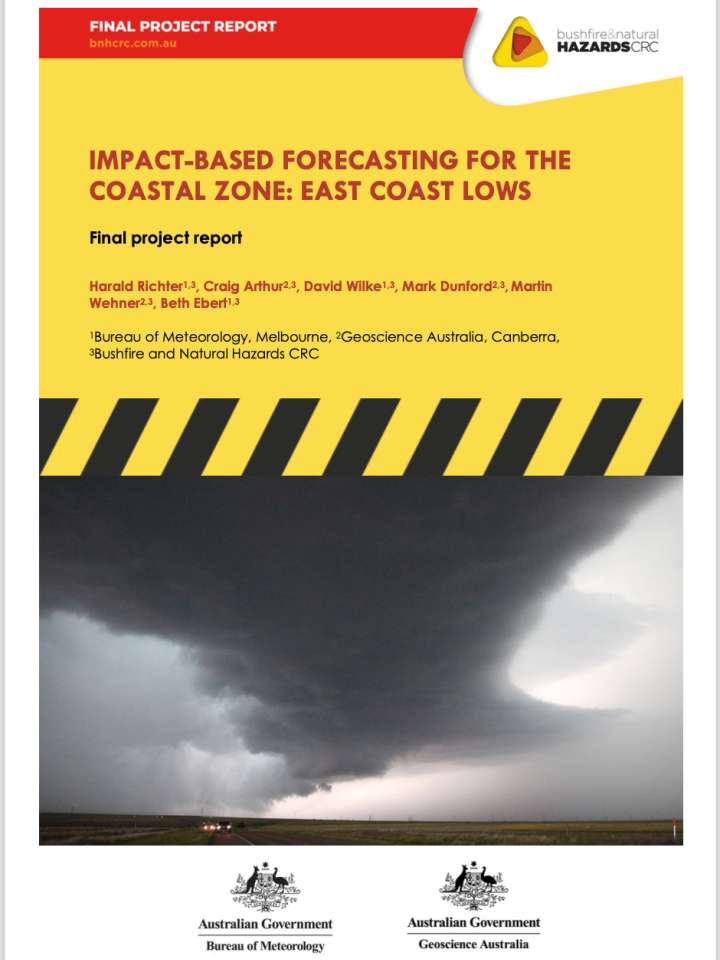Impact-based forecasting for the coastal zone: East coast lows - Final project report
This paper demonstrates a pilot capability to deliver wind and rain impact forecasts for residential housing from an ensemble of weather prediction models runs. The multi-hazard nature of the east coast low event, the relatively low wind speeds relative to the design wind speeds for the affected residential buildings and the available damage assessment data made attributing the observed building damage to a single hazard such as wind or rain difficult. Wind damage to residential housing in this case was largely due to tree fall, as opposed to structural failure, while the most severe damage for the Dungog event was due to flood inundation.
The study shows that the inclusion of exposure and vulnerability information can outperform a wind impact forecast that only uses a plain wind hazard prediction. In other words, the Dungog case study suggests that the extra effort needed for the quantitative inclusion of exposure and vulnerability information is a promising approach in the pursuit of future quantitative impact forecasts in Australia.
Explore further
